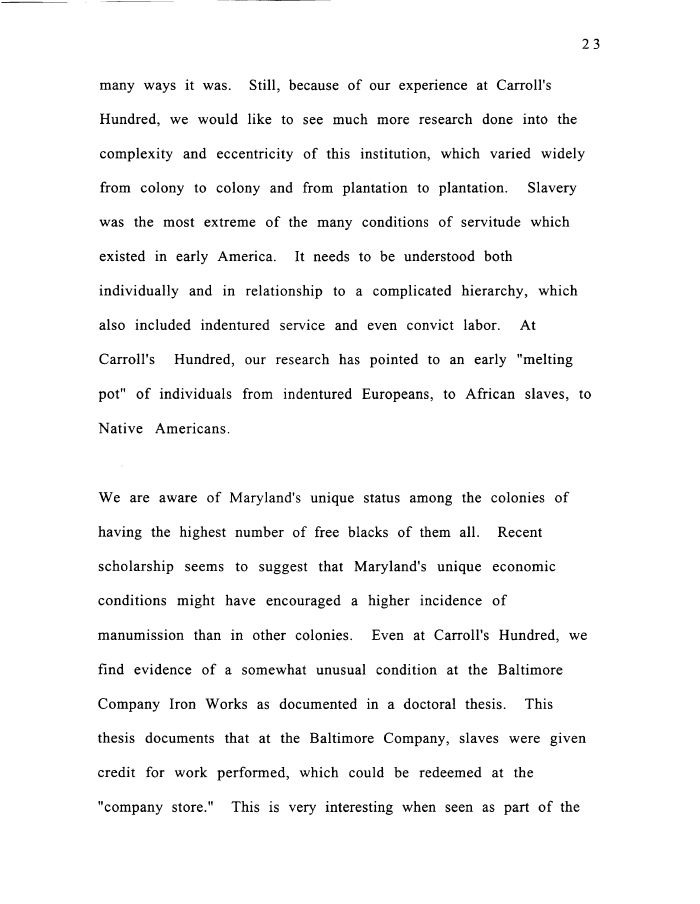 |
||||
|
TASK FORCE TO STUDY THE HISTORY AND LEGACY OF SLAVERY IN MARYLAND (Final Report) 1999/12/31 MdHR 991422 MdHR 991422, Image No: 32 Print image (41K) |
 |
||||
|
TASK FORCE TO STUDY THE HISTORY AND LEGACY OF SLAVERY IN MARYLAND (Final Report) 1999/12/31 MdHR 991422 MdHR 991422, Image No: 32 Print image (41K) |
| 23 many ways it was. Still, because of our experience at Carroll's Hundred, we would like to see much more research done into the complexity and eccentricity of this institution, which varied widely from colony to colony and from plantation to plantation. Slavery was the most extreme of the many conditions of servitude which existed in early America. It needs to be understood both individually and in relationship to a complicated hierarchy, which also included indentured service and even convict labor. At Carroll's Hundred, our research has pointed to an early "melting pot" of individuals from indentured Europeans, to African slaves, to Native Americans. We are aware of Maryland's unique status among the colonies of having the highest number of free blacks of them all. Recent scholarship seems to suggest that Maryland's unique economic conditions might have encouraged a higher incidence of manumission than in other colonies. Even at Carroll's Hundred, we find evidence of a somewhat unusual condition at the Baltimore Company Iron Works as documented in a doctoral thesis. This thesis documents that at the Baltimore Company, slaves were given credit for work performed, which could be redeemed at the "company store." This is very interesting when seen as part of the |